详解ILProtector并写出脱壳机 by Wwh / NCK
# [.NET]详解ILProtector并写出脱壳机 by Wwh / NCK
## 前言
ILProtector应该算是一款强度不是太高,兼容性还不错的壳,网上有关这个壳的资料几乎没有。但是有CodeCracker大神放出的脱壳机和一些基于他的脱壳机改进得到的脱壳机。
这些脱壳在最新版本的ILProtector上已经失效了,但是原理并没有失效。许多人只是使用这些脱壳机,是并不知道其中的原理。这些脱壳机一失效,便无法脱壳。
本文将详解ILProtector的加壳原理并基于GitHub上开源的一个项目((https://github.com/RexProg/ILProtectorUnpacker))写出属于自己的脱壳机。
在研究之前,我们还是需要找到一个ILProtector加壳的样本。很遗憾,没在网上找到最新ILProtector加壳的UnpackMe,所以我们直接拿ILProtector主程序开刀(官网上写了"ILProtector is protected by itself!")。
在研究的时候,用的是2.0.22.4版本的ILProtector,但是写文章的时候发现ILProtector更新到了2.0.22.5,有点尴尬。但是我测试过了,2.0.22.5和2.0.22.4并没有区别,所以本文还是以ILProtector v2.0.22.4主程序为样本来研究。这里提供打包好的文件下载:(https://github.com/wwh1004/blog/raw/master/%5B.NET%5D%E8%AF%A6%E8%A7%A3ILProtector%E5%B9%B6%E5%86%99%E5%87%BA%E8%84%B1%E5%A3%B3%E6%9C%BA/ILProtector%20v2.0.22.4.7z)
## ILProtector保护方式概览
我们先用dnSpy打开ILProtector看看这究竟是怎样保护的:
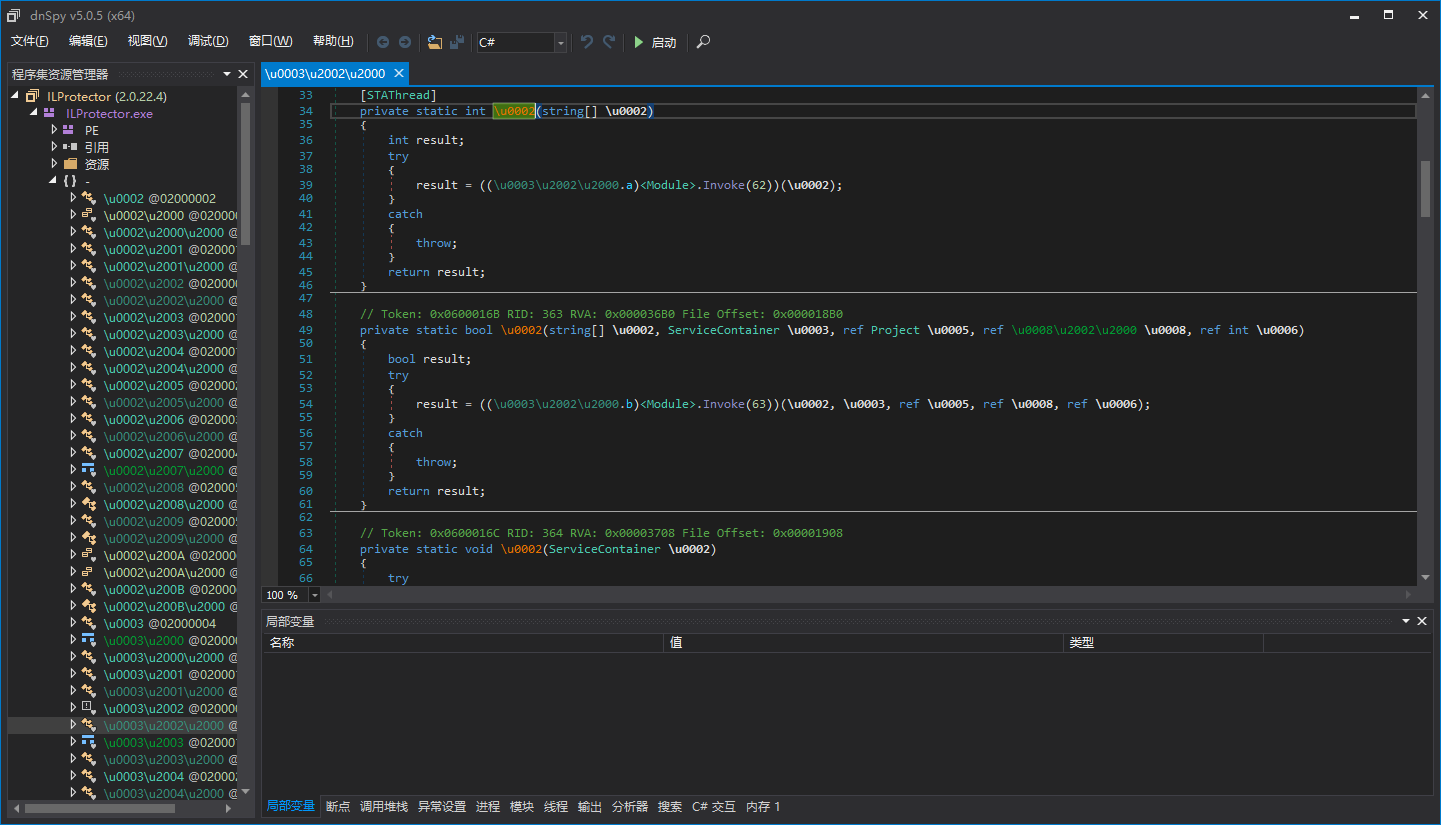
我们可以看到方法体被隐藏了,全部被替换成了"<Module>.Invoke(num)"。尝试用dnSpy调试:
先在Main方法这里下断点:
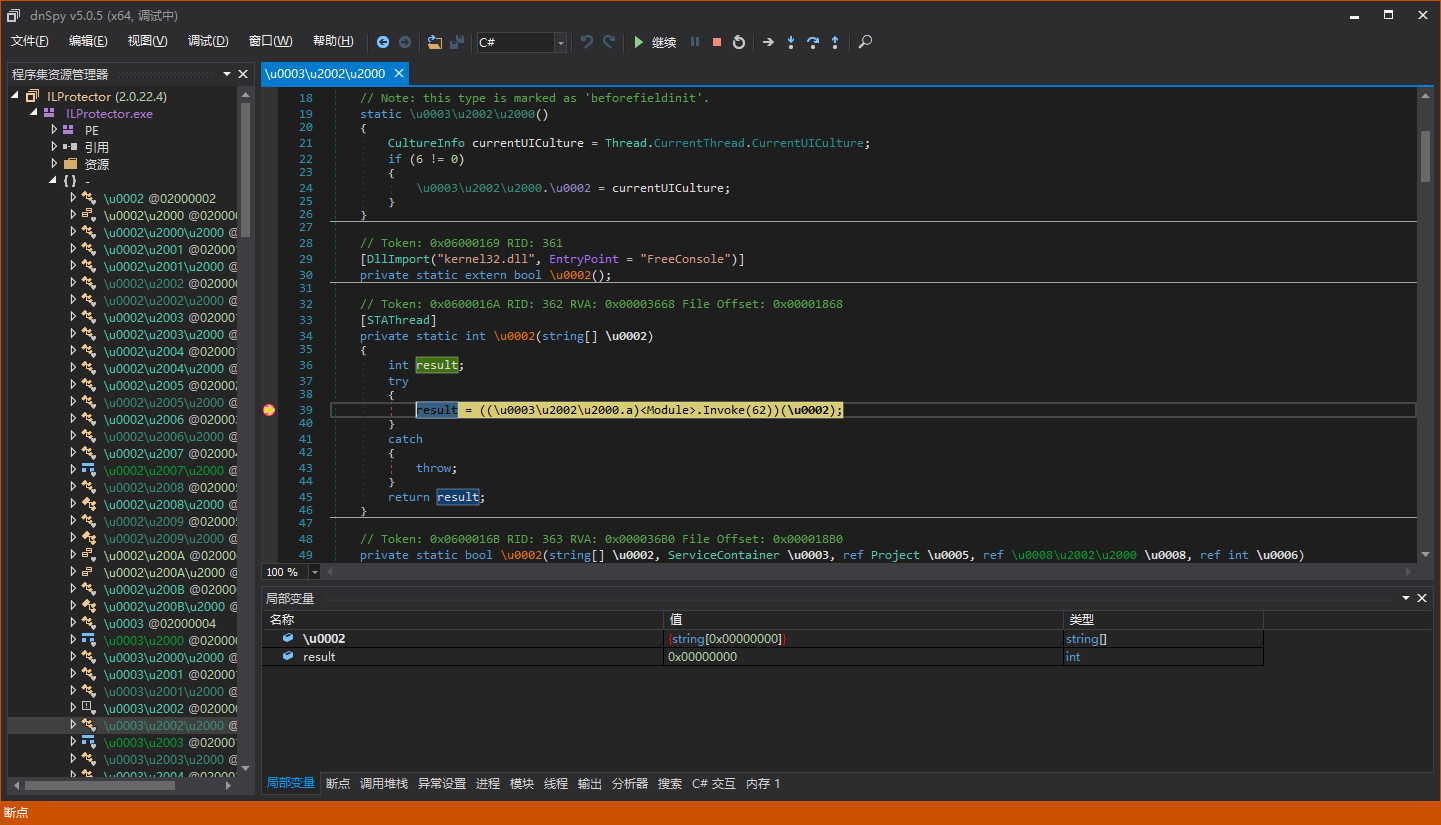
断下来后按F11单步:
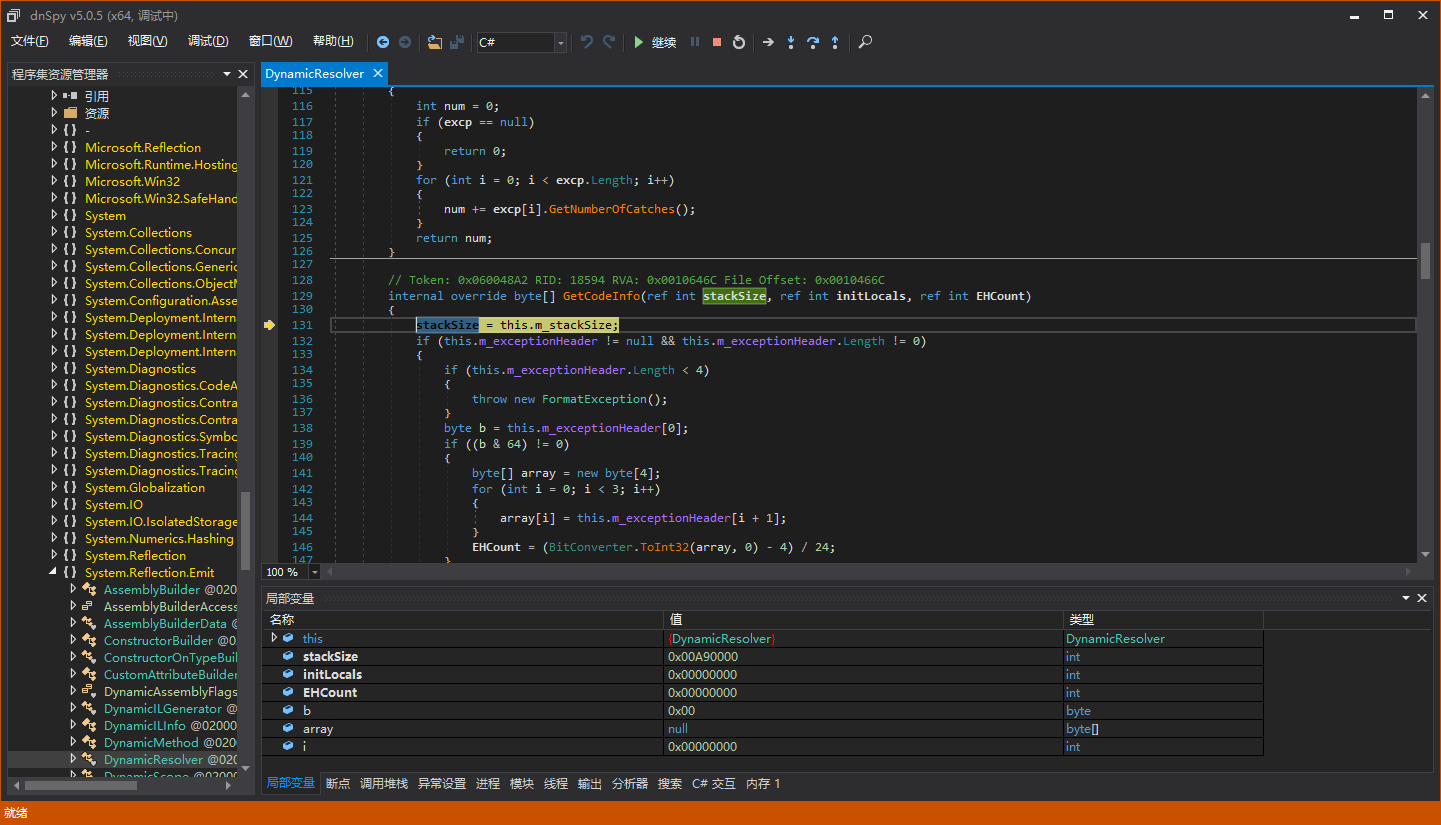
可以初步判断出应该是用了DynamicMethod,我们在DynamicMethod的构造器处下断点,并按F5运行:
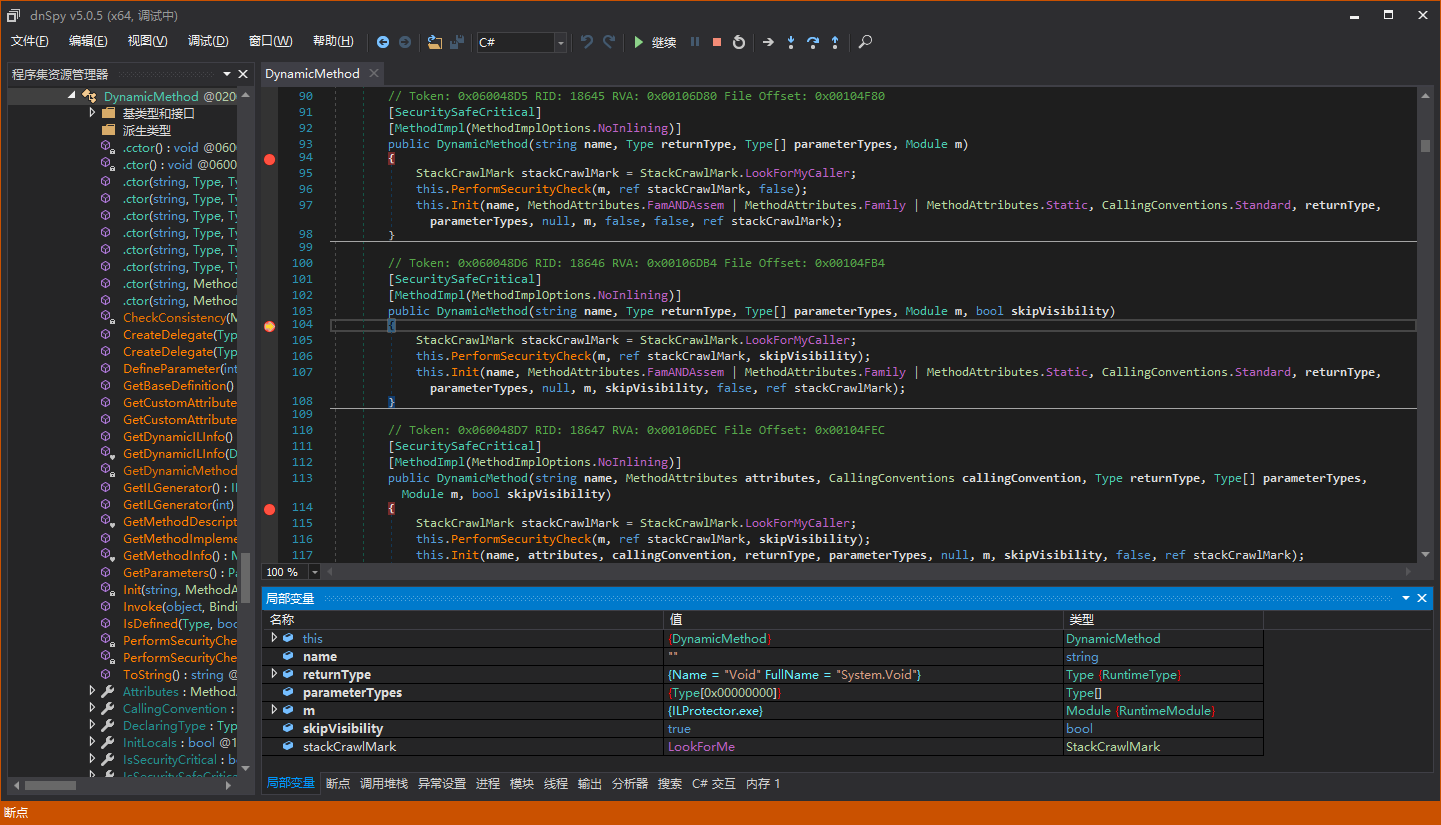
没错,我们的猜错是对的,ILProtector用了DynamicMethod动态生成一个方法体来保护程序集的。
## ILProtectorUnpacker by RexProg的脱壳原理
### 脱壳流程
为了避免各种没有特别大意义的尝试,我们来看看文章开头提到的那个开源项目是怎么实现脱壳的。我们先在vs里面打开这个项目。(这个提供打包好的项目下载:(https://github.com/wwh1004/blog/blob/master/%5B.NET%5D%E8%AF%A6%E8%A7%A3ILProtector%E5%B9%B6%E5%86%99%E5%87%BA%E8%84%B1%E5%A3%B3%E6%9C%BA/ILProtectorUnpacker%20by%20RexProg.7z?raw=true))
找到Main方法,看看是怎么一回事(下面的注释都是我自己加的):
!(https://raw.githubusercontent.com/wwh1004/blog/master/%5B.NET%5D详解ILProtector并写出脱壳机/RexProg的脱壳机的Main方法.png)
可以发现真正的实现是在InvokeDelegates中,转到这个方法:
!(https://raw.githubusercontent.com/wwh1004/blog/master/%5B.NET%5D详解ILProtector并写出脱壳机/RexProg的脱壳机的InvokeDelegates方法.png)
### 过检测
此刻我们大概搞懂脱壳机的脱壳流程了。脱壳机先加载被保护的程序集,接着对一个地方进行Hook,然后手动调用Invoke来获取动态方法,再使用dnlib提供的DynamicMethodBodyReader读取这个动态方法的方法体,还原到文件中的方法体中。刚才提到了Hook,既然是Hook,那八九不离十的与过检测有关,我们来看看Hook了什么玩意:

对应的Detour:
!(https://raw.githubusercontent.com/wwh1004/blog/master/%5B.NET%5D详解ILProtector并写出脱壳机/RexProg的脱壳机的Hook4方法.png)
到这里我们不是特别明白为什么要Hook System.Diagnostics.StackFrameHelper.GetMethodBase,也不明白"if (result.Name == "InvokeMethod")"中的InvokeMethod是何方神圣,我们再次用dnSpy搜索并反编译InvokeMethod看看:
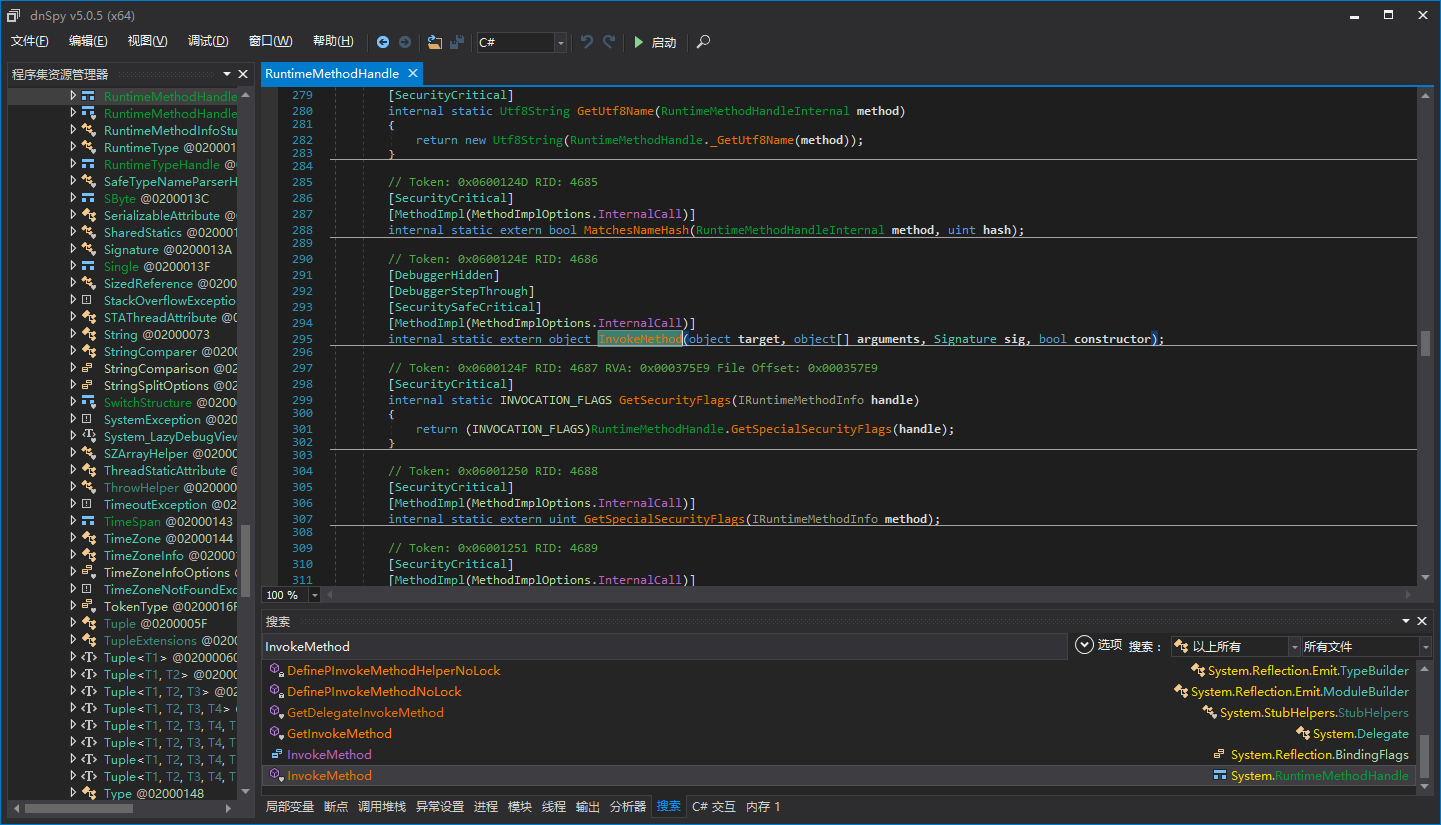
如果有点逆向经验的,应该会知道这个是调用MethodInfo.Invoke时,在托管代码中进入CLR的地方,可以理解成Win32编程中R3转到R0的地方。
!(https://raw.githubusercontent.com/wwh1004/blog/master/%5B.NET%5D详解ILProtector并写出脱壳机/System.RuntimeMethodHandle.InvokeMethod调用堆栈.png)
再结合一些反非法调用的检测原理,可以知道,ILProtector会检测调用堆栈中,被保护方法的上一个方法,比如这样:
!(https://raw.githubusercontent.com/wwh1004/blog/master/%5B.NET%5D详解ILProtector并写出脱壳机/ILProtector的调用堆栈检测.png)
假设箭头2指向的是被保护的方法,箭头1指向的是与ILProtector运行时的非托管代码(当成是,因为dnSpy没法单步进入非托管代码),那么运行时的非托管代码会检测箭头2指向的调用者(Caller)是不是被保护的方法,即这里的"internal static FormPos Load(string fileName)"。如果我们手动Invoke来获取动态方法,那么非托管代码检测到的就不会是"internal static FormPos Load(string fileName)"了,而是刚才提到的"System.RuntimeMethodHandle.InvokeMethod",所以RegProg的脱壳机Hook了GetMethodBase,并且写了
``` csharp
if (result.Name == "InvokeMethod")
// 这是一个很关键的地方。如果得到的结果的Name是"InvokeMethod",那么把这个MethodBase替换成当前要解密的方法的MethodBase
result = Assembly.Modules.FirstOrDefault()?.ResolveMethod(CurrentMethod.MDToken.ToInt32());
```
来过检测。
这段解释有点难理解,虽然尽可能的详细解释了。读者可能会看不太明白,但是知道个大概,所以还是需要自己调试跟踪看看,实践才能真正学习到知识!
### 出错了!
看着我写的,是不是觉得ILProtectorUnpacker写得非常完美?但是道高一尺魔高一丈,有了过检测,也会有反过检测。我们直接编译RexProg的脱壳机并运行:
!(https://raw.githubusercontent.com/wwh1004/blog/master/%5B.NET%5D详解ILProtector并写出脱壳机/RexProg的脱壳机出错了.png)
!(https://raw.githubusercontent.com/wwh1004/blog/master/%5B.NET%5D详解ILProtector并写出脱壳机/RexProg的脱壳机的出错位置.png)
为什么会这样呢,经过各种分析和尝试,也为了文章更简洁,这里将直接写上正确的分析反过检测过程(ILProtector检测到了我们手动调用Invoke)
## ILProtector的检测
首先,ILProtector会检测调用堆栈,我们进行处理了,并且正常工作,那么为什么还会被ILProtector检测到非法调用呢?答:ILProtector检测到了我们的Hook。
先修改一下Memory.Hook,让它输出一些信息(Hook中Target的地址和Detour的地址):
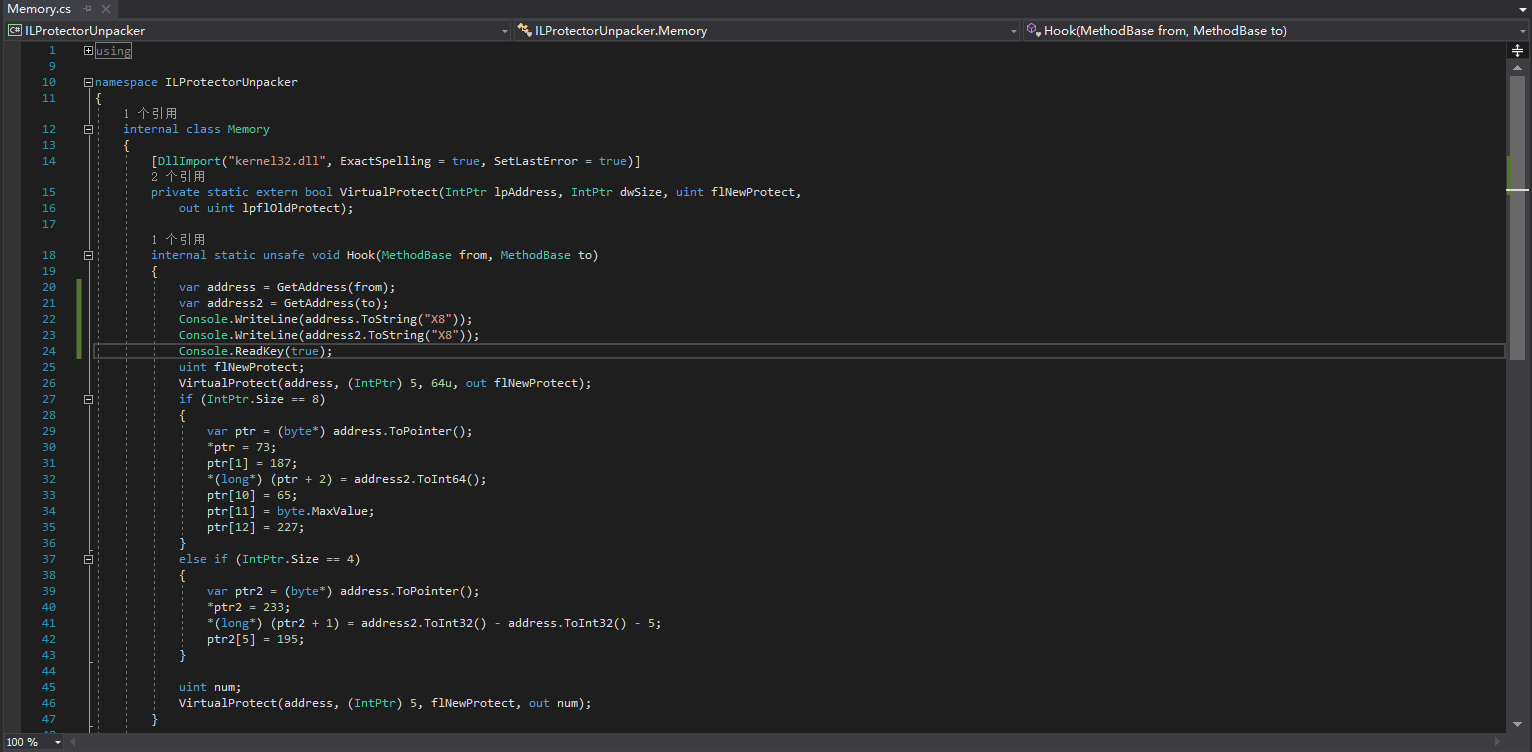
打开x64dbg,启动脱壳机,并让脱壳机运行,到"Console.ReadKey(true);"处停下就行:
!(https://raw.githubusercontent.com/wwh1004/blog/master/%5B.NET%5D详解ILProtector并写出脱壳机/Memory.Hook输出的信息.png)
到x64dbg的内存窗口中转到第一个地址,第一个地址是被Hook的方法的地址,即System.Diagnostics.StackFrameHelper.GetMethodBase的地址,然后给System.Diagnostics.StackFrameHelper.GetMethodBase下硬件访问断点:
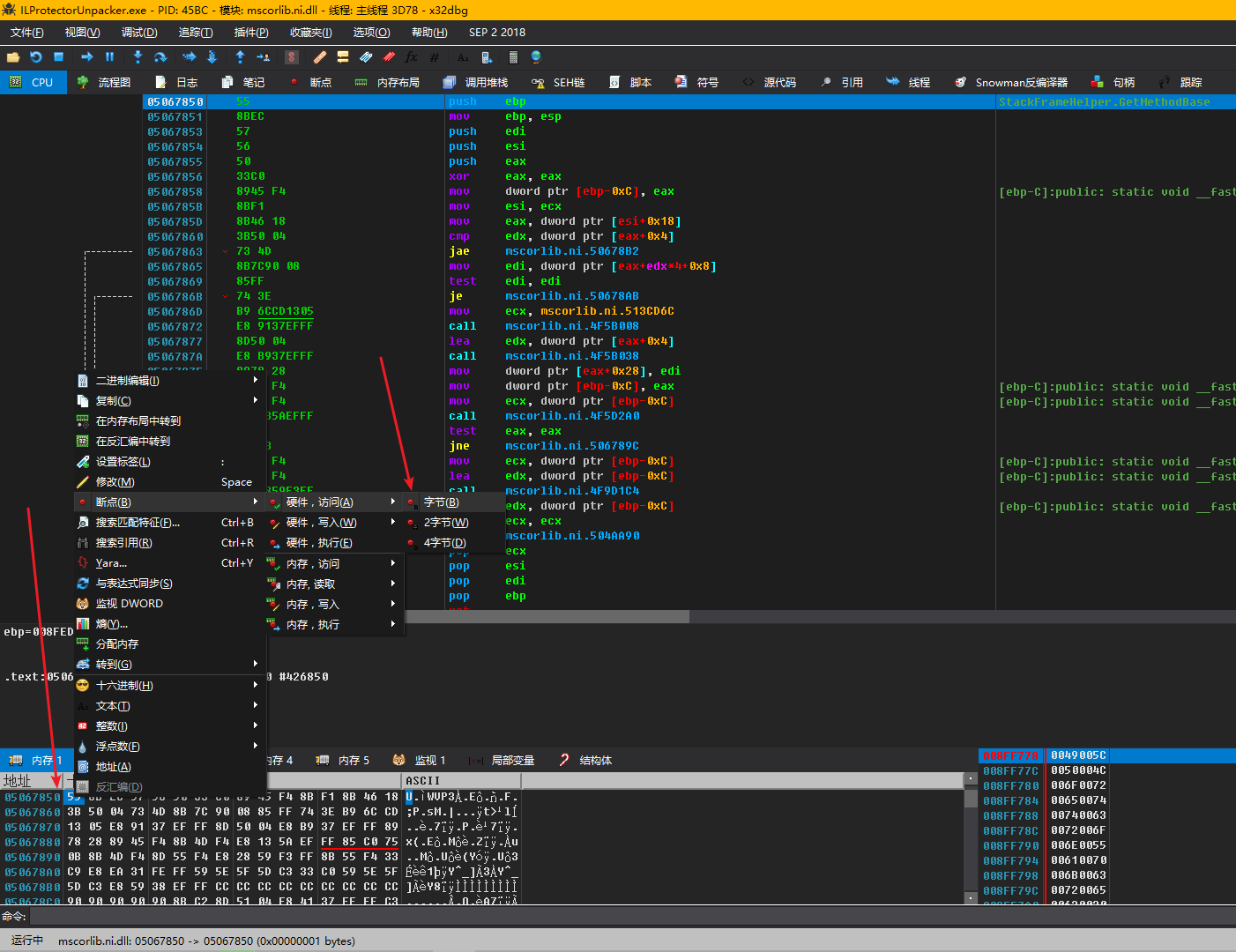
控制台里面随便按一个按键,让脱壳机继续执行,直到断在了ProtectXXX.dll。
!(https://raw.githubusercontent.com/wwh1004/blog/master/%5B.NET%5D详解ILProtector并写出脱壳机/ILProtector的Hook检测的地址.png)
这里是一个jcc指令,更能证明这里是检测是否被Hook。为了方便,而且这是个未加壳的DLL,我们直接上IDA,反编译这个Hook检测函数。这个函数的RVA是0x31B70,所以直接在IDA中搜索"31B70"。
!(https://raw.githubusercontent.com/wwh1004/blog/master/%5B.NET%5D详解ILProtector并写出脱壳机/IDA反编译Hook检测函数.png)
我已经把代码重命名好了,所以读者可以直接思考这段检测的原理。我还是大概解释一下这个检测:
IsHooked(char *pEntry)会被传入要检测的地址,比如这次用x64dbg调试,被传入的地址就是0x05067850。
``` cpp
if ( *pEntry == 0x55 )
offset = 1;
```
这段代码可以认为是垃圾代码,不需要理解
``` cpp
while ( offset < 0xFF && pEntry == 0x90u )// 跳过nop
++offset;
```
跳过nop
``` cpp
if ( pEntry == 0xE9u ) // 第一条指令为jmp XXXXXXXX
{
result = 1;
}
else
{
InterlockedCompareExchange(&Destination, 0x45524548, 0x4B4F4F4C);
result = 0;
}
return result;
```
判断nop后(如果存在nop)的第一条指令是不是jmp。如果是jmp,返回true,表示检测到了Hook;如果不是jmp,表示代码正常,未被Hook,设置一个标志后(这个标志不用管),返回false。
## 再过ILProtector检测
可是别忘了我们有无数方式来写点JunkCode,直接就过掉了检测。
我们先看看脱壳机把System.Diagnostics.StackFrameHelper.GetMethodBase改成什么样了:
!(https://raw.githubusercontent.com/wwh1004/blog/master/%5B.NET%5D详解ILProtector并写出脱壳机/System.Diagnostics.StackFrameHelper.GetMethodBase被Hook成这样了.png)
难怪会被检测到,这第一条指令就是jmp,Hook得太直接了。我们玩点花样,在"jmp 0x06715AA8"前面加个0xEB 0x00,相当于"jmp eip/rip+2"。

按F8单步到Hook检测返回,可以发现,它返回false了。按F5发现脱壳机不报错了,也就是我们的再过检测成功了!
!(https://raw.githubusercontent.com/wwh1004/blog/master/%5B.NET%5D详解ILProtector并写出脱壳机/Hook检测返回false.png)
!(https://raw.githubusercontent.com/wwh1004/blog/master/%5B.NET%5D详解ILProtector并写出脱壳机/RexProg的脱壳机成功脱壳.png)
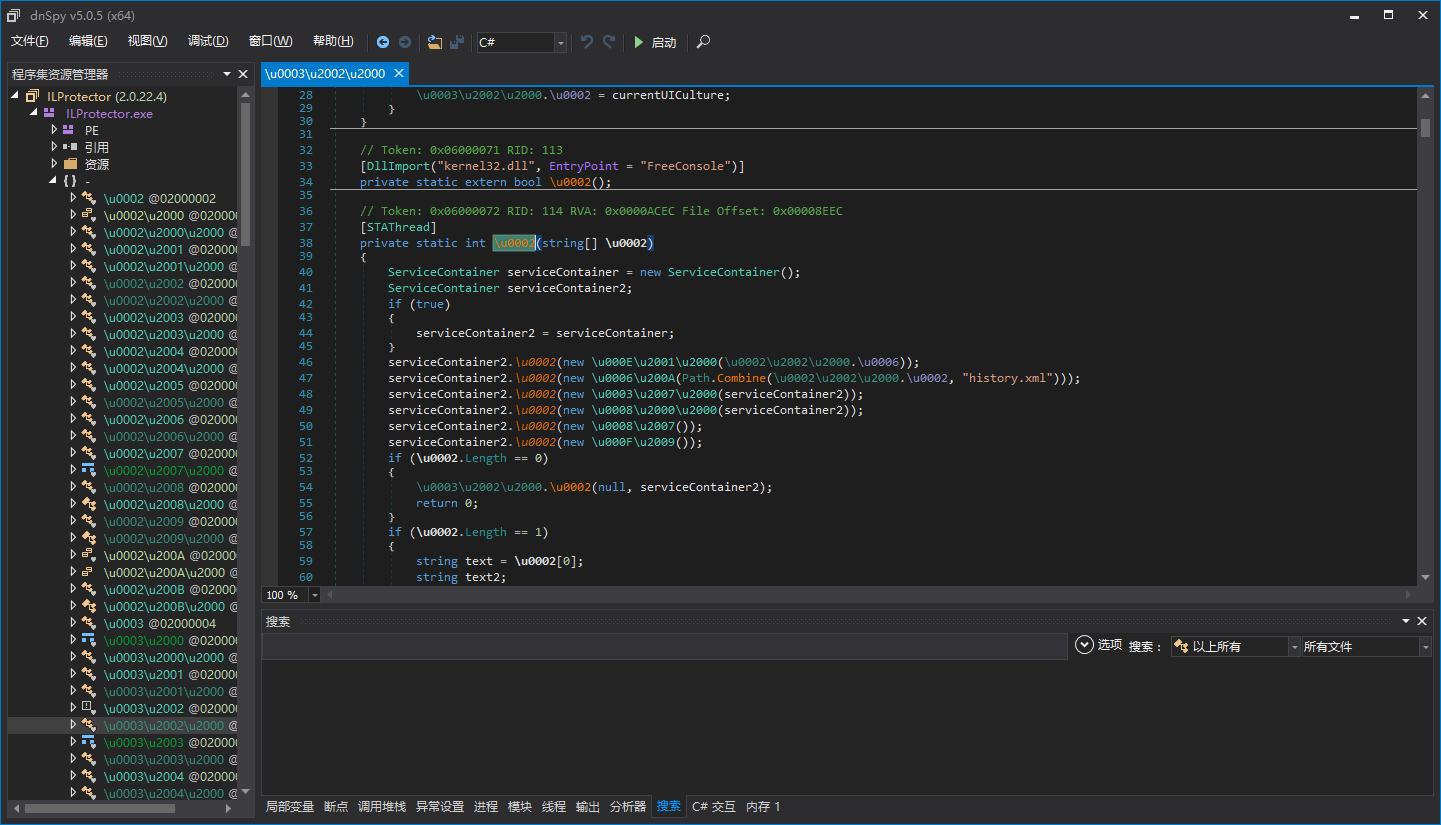
## 属于自己的脱壳机
那么对RexProg的ILProtectorUnpacker研究和对ILProtector本身的研究可以告一段落了。接下来开始讲解如何自己写一个脱壳机。
写个简单的框架:

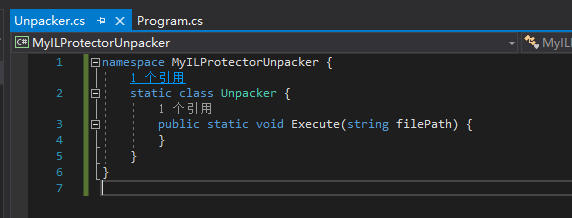

在调用DecryptAllMethodBodys之前,我们得对System.Diagnostics.StackFrameHelper.GetMethodBase进行Hook。
GetMethodBase是实例方法,所以我们专门写一个类来放Detour方法,在这个类的静态构造器里面插入反射API初始化的代码:
``` csharp
Module mscorlib;
mscorlib = typeof(object).Module;
FieldInfo_rgMethodHandle = mscorlib.GetType("System.Diagnostics.StackFrameHelper").GetField("rgMethodHandle", BindingFlags.NonPublic | BindingFlags.Instance);
ConstructorInfo_RuntimeMethodInfoStub = mscorlib.GetType("System.RuntimeMethodInfoStub").GetConstructor(BindingFlags.Public | BindingFlags.Instance, null, new Type[] { typeof(IntPtr), typeof(object) }, null);
MethodInfo_GetTypicalMethodDefinition = mscorlib.GetType("System.RuntimeMethodHandle").GetMethod("GetTypicalMethodDefinition", BindingFlags.NonPublic | BindingFlags.Static, null, new Type[] { mscorlib.GetType("System.IRuntimeMethodInfo") }, null);
MethodInfo_GetMethodBase = mscorlib.GetType("System.RuntimeType").GetMethod("GetMethodBase", BindingFlags.NonPublic | BindingFlags.Static, null, new Type[] { mscorlib.GetType("System.IRuntimeMethodInfo") }, null);
```
注意,因为是Hook了的,所以this指针是错误的,FieldInfo_rgMethodHandle这样的字段要定义为静态的字段,如果不理解,可以改成非静态,看看如何报错,这里不演示了。
相较于暴力GetMethodByName,我更喜欢用Attribute来获取自己的Detour。我们定义一个DetourAttribute:
``` csharp
private sealed class GetMethodBaseDetourAttribute : Attribute {
}
```
回到那个放Detour的类,写上这样的代码:
``` csharp
public virtual MethodBase GetMethodBaseDetour(int i) {
IntPtr[] rgMethodHandle;
IntPtr methodHandleValue;
object runtimeMethodInfoStub;
object typicalMethodDefinition;
MethodBase result;
rgMethodHandle = (IntPtr[])FieldInfo_rgMethodHandle.GetValue(this);
methodHandleValue = rgMethodHandle;
runtimeMethodInfoStub = ConstructorInfo_RuntimeMethodInfoStub.Invoke(new object[] { methodHandleValue, this });
typicalMethodDefinition = MethodInfo_GetTypicalMethodDefinition.Invoke(null, new[] { runtimeMethodInfoStub });
result = (MethodBase)MethodInfo_GetMethodBase.Invoke(null, new[] { typicalMethodDefinition });
if (result.Name == "InvokeMethod")
result = _module.ResolveMethod(_currentMethod.MDToken.ToInt32());
return result;
}
```
这样我们就可以使用
``` csharp
private static MethodInfo GetMethodByAttribute<TClass, TMethodAttribute>() where TMethodAttribute : Attribute {
foreach (MethodInfo methodInfo in typeof(TClass).GetMethods(BindingFlags.Public | BindingFlags.NonPublic | BindingFlags.Instance | BindingFlags.Static)) {
object[] attributes;
attributes = methodInfo.GetCustomAttributes(typeof(TMethodAttribute), false);
if (attributes != null && attributes.Length != 0)
return methodInfo;
}
return null;
}
```
来获取Detour,不用担心什么时候代码被混淆了,GetMethodByName会出错。
``` csharp
private static void* GetMethodAddress(MethodBase methodBase) {
RuntimeHelpers.PrepareMethod(methodBase.MethodHandle);
return (void*)methodBase.MethodHandle.GetFunctionPointer();
}
private static void WriteJunkCode(ref void* address) {
byte[] junkJmp;
junkJmp = new byte[] {
0xEB, 0x00
};
// 这里使用JunkJmp,相当于jmp eip/rip+2
Write(address, junkJmp);
address = (byte*)address + 2;
}
private static void WriteJmp(ref void* address, void* target) {
byte[] jmpStub;
if (IntPtr.Size == 4) {
jmpStub = new byte[] {
0xE9, 0x00, 0x00, 0x00, 0x00
};
fixed (byte* p = jmpStub)
*(int*)(p + 1) = (int)target - (int)address - 5;
}
else {
jmpStub = new byte[] {
0x48, 0xB8, 0x00, 0x00, 0x00, 0x00, 0x00, 0x00, 0x00, 0x00, // mov rax, target
0xFF, 0xE0 // jmp rax
};
fixed (byte* p = jmpStub)
*(ulong*)(p + 2) = (ulong)target;
}
Write(address, jmpStub);
address = (byte*)address + jmpStub.Length;
}
```
写上这样的方法,我们再写个新方法,获取Target的地址和Detour的地址,先对Tagret写入JunkCode,再写入真正的Jmp跳转。
此时,我们可以在Execute(string filePath)中加入:
``` csharp
if (Environment.Version.Major == 2)
throw new NotSupportedException();
else
InstallHook(typeof(object).Module.GetType("System.Diagnostics.StackFrameHelper").GetMethod("GetMethodBase", BindingFlags.Public | BindingFlags.Instance), GetMethodByAttribute<StackFrameHelperDetour4, GetMethodBaseDetourAttribute>());
```
接下来,我们写好先前定义的DecryptAllMethodBodys()。先在方法内定义变量
``` csharp
TypeDef globalType;
object instanceOfInvoke;
MethodInfo methodInfo_Invoke;
uint methodTableLength;
```
然后,我们要通过反射来获取<Module>中的"internal static i Invoke"
``` csharp
globalType = _moduleDef.GlobalType;
instanceOfInvoke = null;
foreach (FieldDef fieldDef in globalType.Fields)
if (fieldDef.Name == "Invoke")
instanceOfInvoke = _module.ResolveField(fieldDef.MDToken.ToInt32()).GetValue(null);
methodInfo_Invoke = instanceOfInvoke.GetType().GetMethod("Invoke");
methodTableLength = _moduleDef.TablesStream.MethodTable.Rows;
```
methodTableLength表示了程序集里面总共有多少个方法,我们开始遍历每一个方法,所以使用for循环来实现
``` csharp
for (uint rid = 1; rid <= methodTableLength; rid++) {
}
```
循环体内定义变量
``` csharp
MethodDef methodDef;
object dynamicMethod;
```
methodDef表示当前被Resolve的方法,dynamicMethod表示前面i.Invoke(num)返回的的值,这个值是委托,委托内部是动态方法。
``` csharp
methodDef = _moduleDef.ResolveMethod(rid);
if (!NeedDecryptMethodBody(methodDef))
continue;
_currentMethod = methodDef;
dynamicMethod = methodInfo_Invoke.Invoke(instanceOfInvoke, new object[] { methodDef.Body.Instructions.GetLdcI4Value() });
```
此时,我们准备好了一切,只差Invoke与还原,所以我们再添上它们。
``` csharp
try {
DynamicMethodBodyReader reader;
reader = new DynamicMethodBodyReader(_moduleDef, dynamicMethod);
reader.Read();
_currentMethod.FreeMethodBody();
_currentMethod.Body = reader.GetMethod().Body;
}
catch (Exception) {
}
```
我们运行下脱壳机,发现真的可以解密出方法体。如果真正跟着写了一个脱壳机,真的是非常激动的,自己又研究出了成果,不是么?
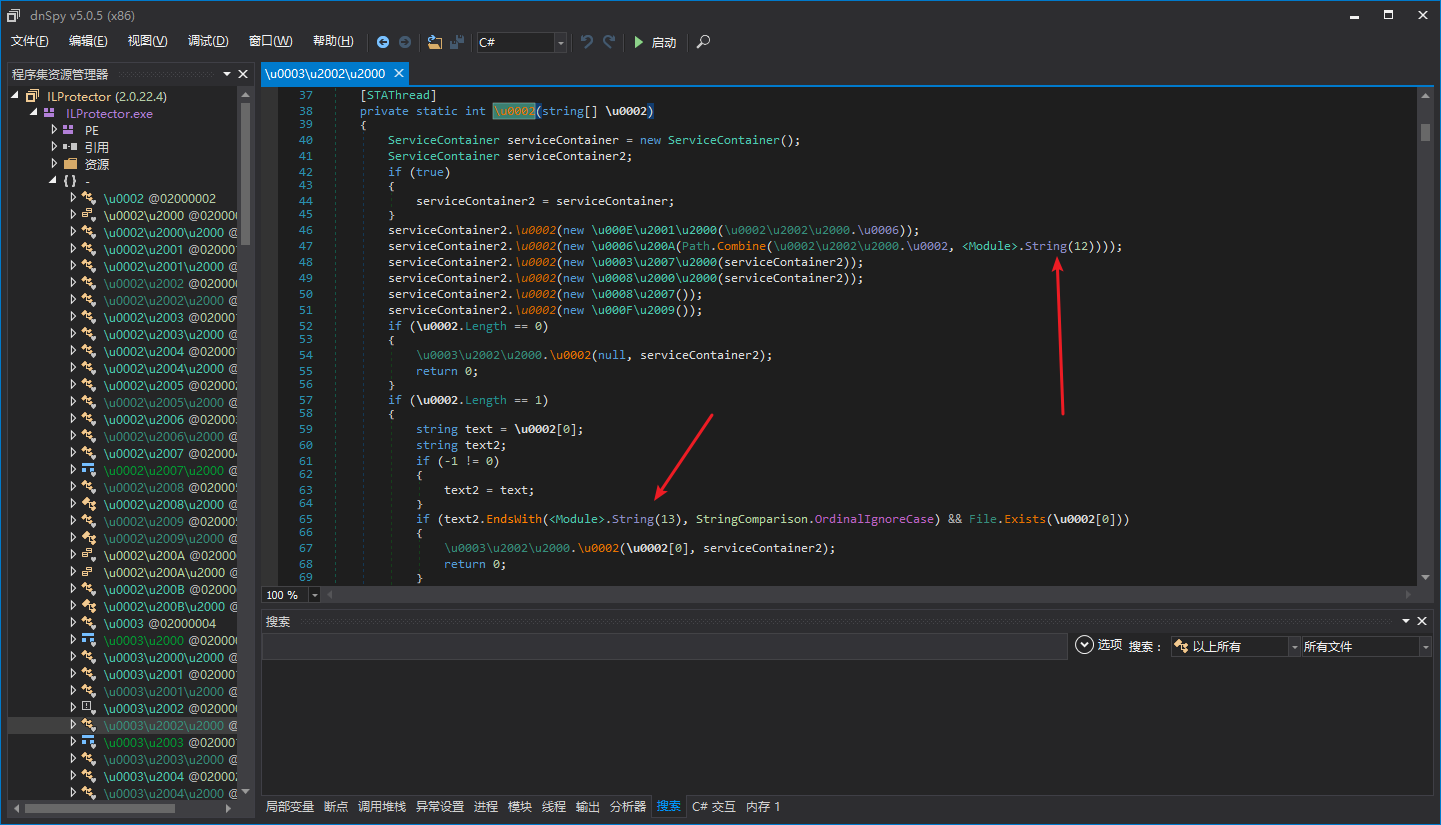
可是我们可以发现,好像还有字符串没有解密。我们再联系一下这个<Module>中的"internal static s String",可以知道,这个和Invoke是一样的——一样的调用方式,就可以解密出字符串,这里就不继续贴代码了,因为真的是一样的,而且这个没有检测,直接调用就行。
解密出字符串的效果:

接下来,我们要移除ILProtector运行时的初始化代码。虽然不移除也没关系,但是为了完美,我们再完善一下脱壳机:
``` csharp
private static void RemoveRuntimeInitializer() {
// IL_0000: ldtoken '<Module>'
// IL_0005: call class System.Type System.Type::GetTypeFromHandle(valuetype System.RuntimeTypeHandle)
// IL_000A: call native int System.Runtime.InteropServices.Marshal::GetIUnknownForObject(object)
// IL_000F: stloc V_0
// .try
// {
// IL_0013: call int32 System.IntPtr::get_Size()
// IL_0018: ldc.i4.4
// IL_0019: bne.un.sIL_0031
// IL_001B: call class System.Version System.Environment::get_Version()
// IL_0020: callvirtinstance int32 System.Version::get_Major()
// IL_0025: ldloc V_0
// IL_0029: call bool '<Module>'::g(int32, native int)
// IL_002E: pop
// IL_002F: br.s IL_004D
// IL_0031: call int32 System.IntPtr::get_Size()
// IL_0036: ldc.i4.8
// IL_0037: bne.un.sIL_004D
// IL_0039: call class System.Version System.Environment::get_Version()
// IL_003E: callvirtinstance int32 System.Version::get_Major()
// IL_0043: ldloc V_0
// IL_0047: call bool '<Module>'::h(int32, native int)
// IL_004C: pop
// IL_004D: leave.s IL_005A
// } // end .try
// finally
// {
// IL_004F: ldloc V_0
// IL_0053: call int32 System.Runtime.InteropServices.Marshal::Release(native int)
// IL_0058: pop
// IL_0059: endfinally
// } // end handler
MethodDef cctor;
IList<Instruction> instructionList;
int startIndex;
int endIndex;
IList<ExceptionHandler> exceptionHandlerList;
cctor = _moduleDef.GlobalType.FindStaticConstructor();
instructionList = cctor.Body.Instructions;
startIndex = 0;
for (int i = 0; i < instructionList.Count; i++)
if (instructionList.OpCode == OpCodes.Call && instructionList.Operand is MemberRef && ((MemberRef)instructionList.Operand).Name == "GetIUnknownForObject")
startIndex = i - 2;
endIndex = 0;
for (int i = startIndex; i < instructionList.Count; i++)
if (instructionList.OpCode == OpCodes.Call && instructionList.Operand is MemberRef && ((MemberRef)instructionList.Operand).Name == "Release")
endIndex = i + 3;
for (int i = startIndex; i < endIndex; i++) {
instructionList.OpCode = OpCodes.Nop;
instructionList.Operand = null;
}
exceptionHandlerList = cctor.Body.ExceptionHandlers;
for (int i = 0; i < exceptionHandlerList.Count; i++)
if (exceptionHandlerList.HandlerType == ExceptionHandlerType.Finally && exceptionHandlerList.HandlerEnd == instructionList) {
exceptionHandlerList.RemoveAt(i);
break;
}
}
```
代码中startIndex表示运行时初始化代码的开头,endIndex表示运行时初始化代码的结尾的后一句代码。因为方法体中可能存在跳转,又因为dnlib的一些特性,我们不能直接把Instruction换成Nop,而要这样:
``` csharp
instructionList.OpCode = OpCodes.Nop;
instructionList.Operand = null;
```
除此之外,被保护的程序集中还有一些别的ILProtector造成的残留代码,移除方法就不一一阐述。
放出成品脱壳机没有太大的意思,还是更希望读者能自己照着文章研究出脱壳机。而不是只会使用别人写好的,哪天加壳工具一更新,脱壳机失效,就不会脱壳了。 感谢分享,先收藏了*^_^* Abigor 发表于 2019-1-7 19:28
仍然反钩系统是原始的,并且ASM数据库的知识将很容易绕过检查。 看着22.8。
Hi, can you use English? I can understand English a little. The words translated by Google translator are bit difficult to understand.:loveliness: Abigor 发表于 2018-12-2 05:45
在版本2.0.22.6增加了一个检查的前两个语句。 作为一个选项,把挂钩后3个字节。
Hook:
push ebp
估计作者看到我的文章了,或者有人把我文章翻译到国外了。2.0.22.6更新的检测完全就是针对我的Hook的,要过这个检测非常简单,IDA反编译下它的检测代码就行。 坐个沙发~ 关注师傅很久了,师傅每次发的贴子都让我们受益匪浅
谢谢分享 感谢楼主提供的教程 帮助很大 谢谢 非常好的分析,很难遇到这种好的文章了 高人啊,虽然看不懂,收藏学习,努力的方向就是看懂这篇文章。 感谢 分享 感谢分享,努力看懂 暂时看不懂,mark一下。 大牛毕竟是大牛,用的软件都能看出来。